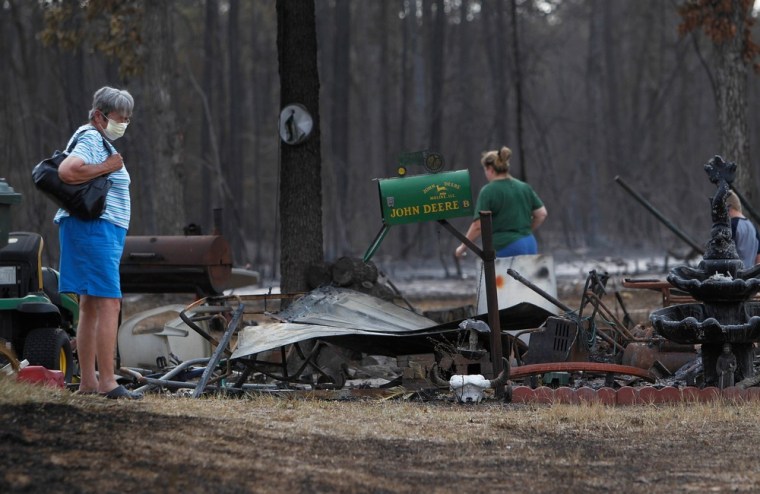The drought in Texas that has fueled wildfires, devastated agriculture and caused water shortages actually worsened in the past week while several other states also saw spreading drought, according to a weekly report issued Thursday. The forecast for three months out isn't any better: Texas was told to expect abnormally warm and dry conditions from October to December thanks to another La Nina weather cycle.
"Texas conditions continue to deteriorate what little they can from abysmal," the U.S. Drought Monitor stated. That was due to drought expanding into "the southeast, central, south-central, Big Bend region, and extreme south around Brownsville."
The lack of rain from Tropical Storm Nate last week "and better odds of a second consecutive La Nina winter only add fuel to this well-fed and entrenched drought," the report added.
La Nina conditions in the U.S. tend to mean warmer, drier weather in the south and the U.S. Climate Prediction Center said Thursday that over the next three months above normal temperatures are expected in Colorado, Kansas, New Mexico, Oklahoma and Texas — as well as parts of areas along the western Great Lakes.
Much of Texas and Oklahoma would need 9 to 23 inches of rain over the next month to emerge from drought.

While some rain fell Thursday morning in parts of hard-hit north Texas, nearly 88 percent of the state is in what is classified as exceptional drought — up from 81 percent the week before.
Nearly 97 percent of Texas is in either exceptional or extreme drought.
From June through August, Texas suffered the hottest three months ever recorded in the United States, according to the National Weather Service. And the 12 months ending on Aug. 31 were the driest 12 months in Texas history, with most of the state receiving just 21 percent of its annual average rainfall.
Record heat has extended to other states: Arizona, Colorado, Louisiana, New Mexico and Oklahoma joined Texas in posting their warmest August on record.
In Texas alone, agricultural losses have topped $5 billion.
Several other states are also seeing worsening drought:
- Oklahoma: the entire state is in either severe, extreme or exceptional drought.
- Georgia: Some 80 percent of the state is in extreme or exceptional drought.
- Florida: Conditions improved in South Florida "but longer-term deficits and low lake levels (Lake Okeechobee in particular) and surrounding ecosystem stress is still of concern heading into the dry season."
- South Carolina: Drought conditions spread into the state from north Florida.
- North Carolina: the central part of the state saw new drought conditions after being missed by rains from Hurricane Irene and Tropical Storm Lee.
- Midwest: an expansion of severe drought "leads to a band connecting Indiana with Illinois and Iowa to the west across the heart of the Corn Belt."
Over the next few days, some 1-2 inches of rain is forecast in drought areas. But the rain is expected to largely miss Texas, instead favoring Oklahoma, Kansas and areas more to the north.
